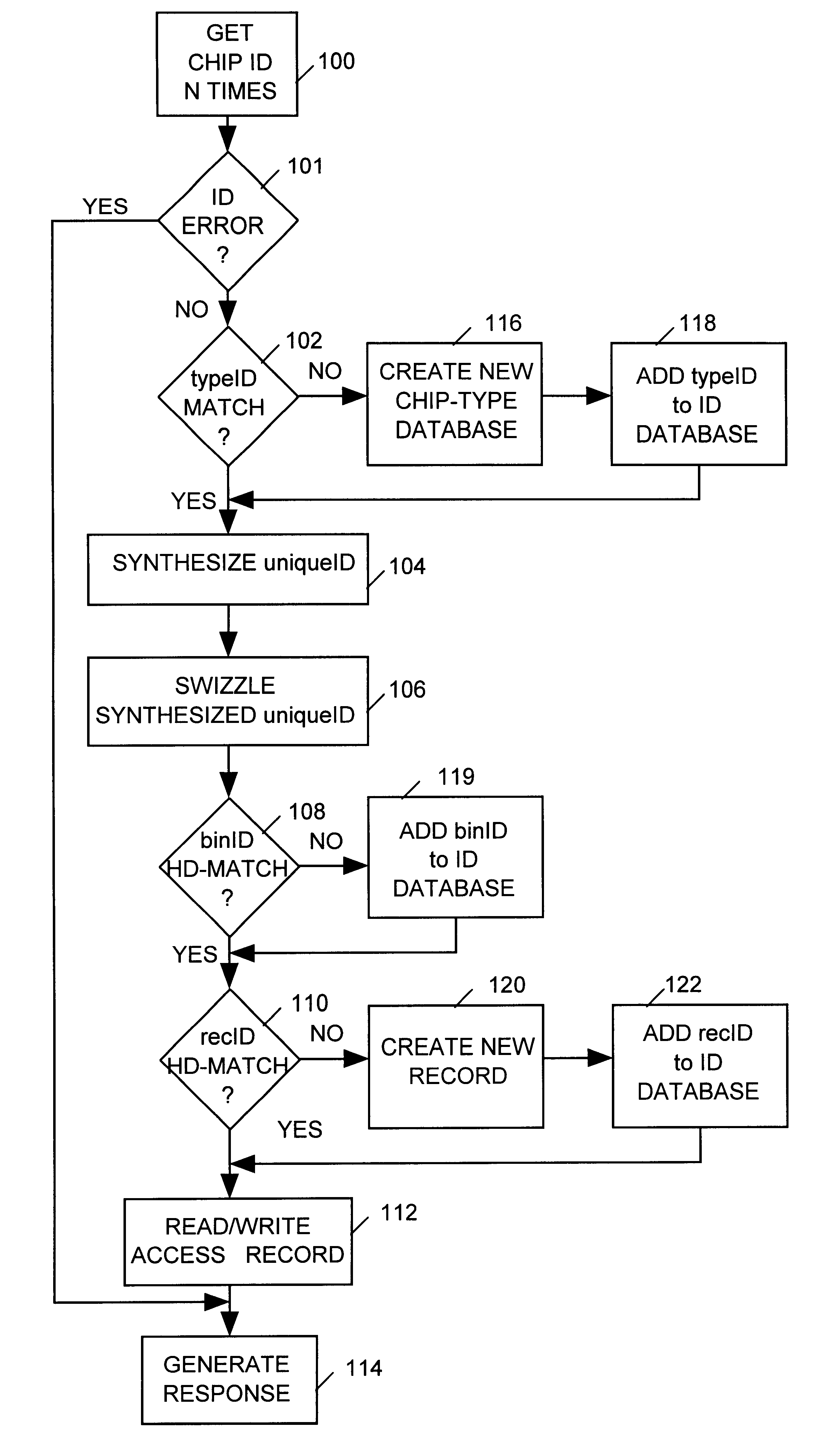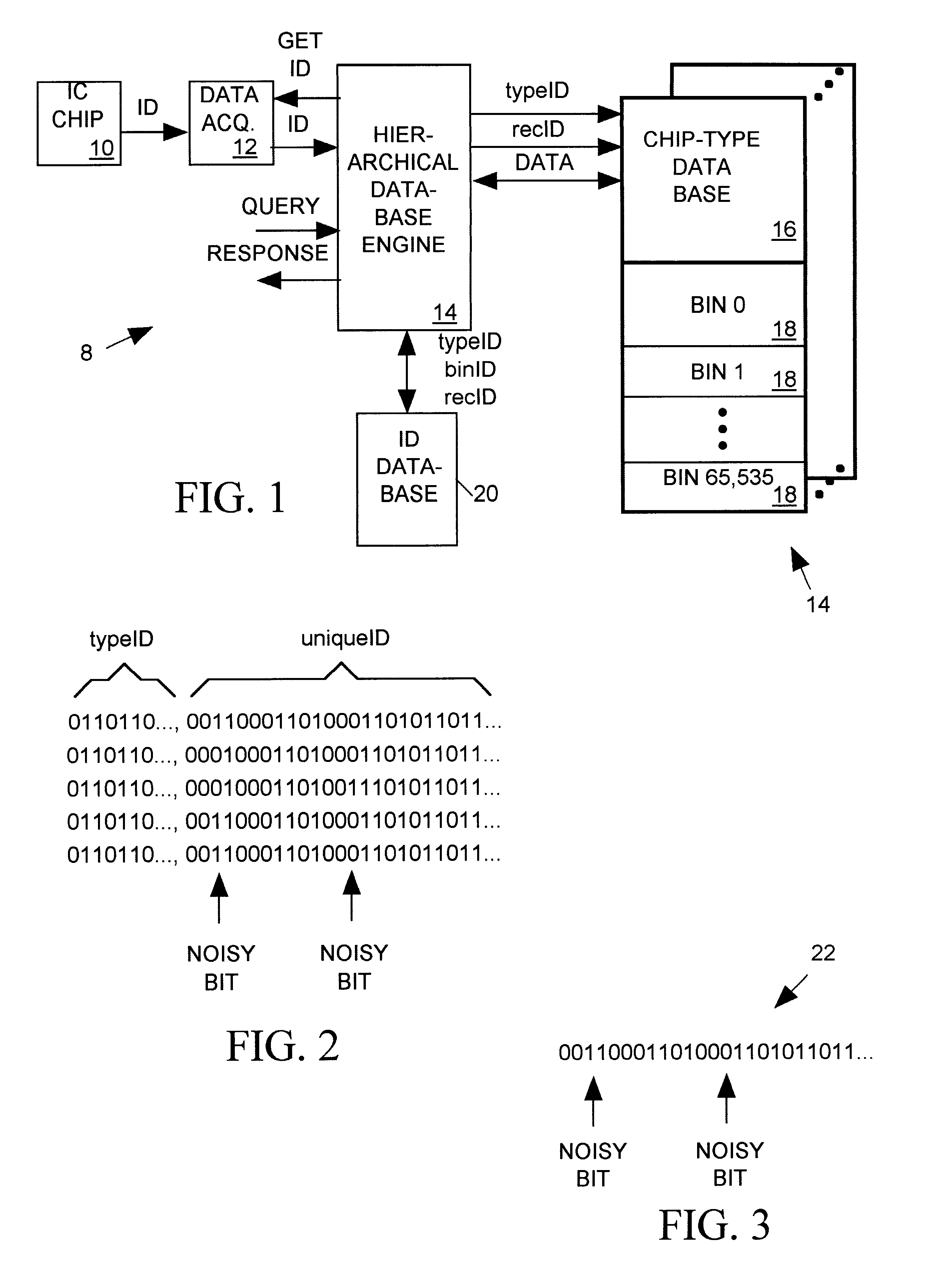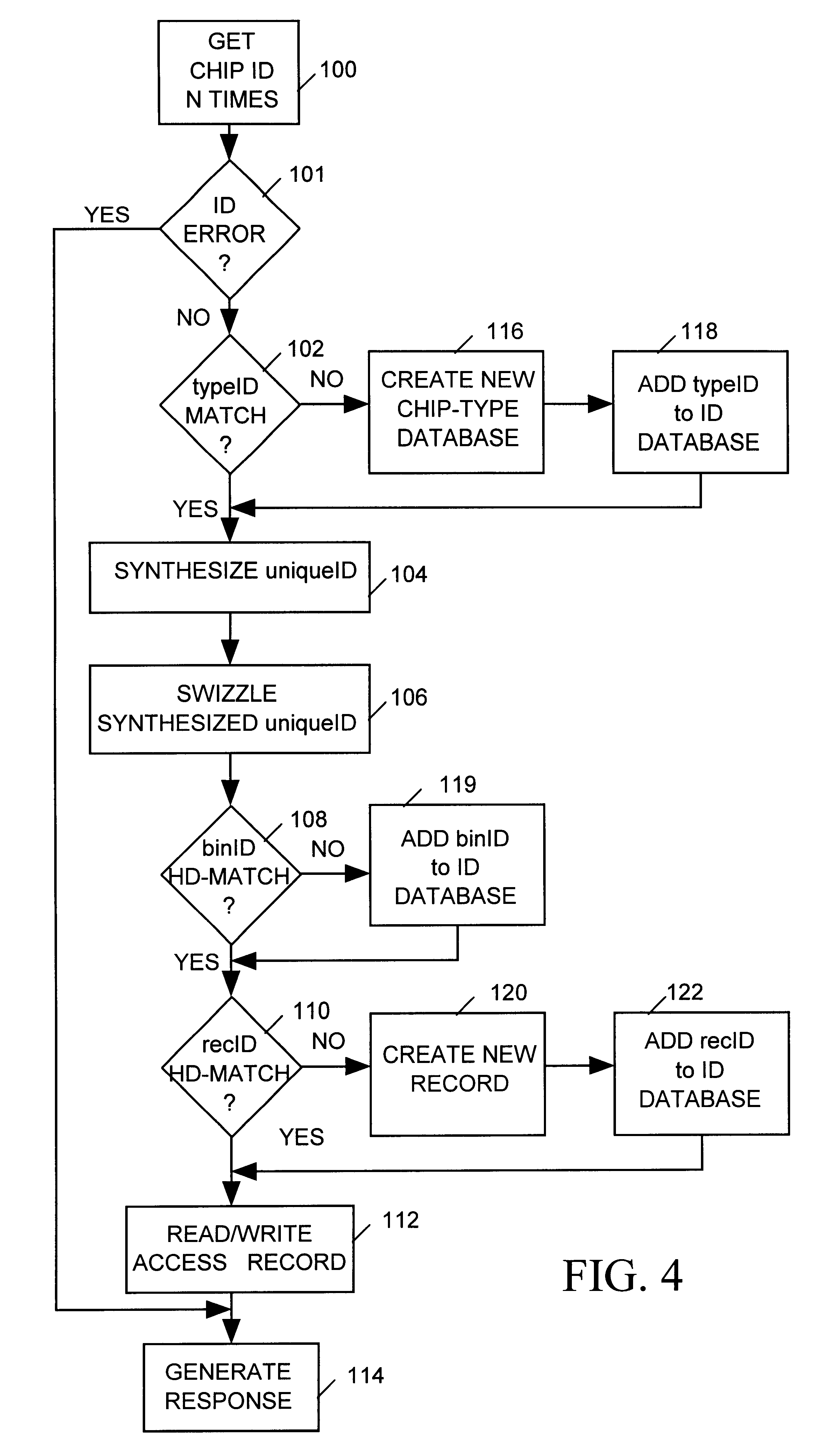Database system using a record key having some randomly positioned, non-deterministic bits
a database and record key technology, applied in the field of database system using random positioning, non-deterministic bits, can solve the problems of requiring more complex manufacturing process steps, deterministic id keys not being able to locate all records relating to a particular ic, and id newly read out of an ic chip may not match any of the ids
- Summary
- Abstract
- Description
- Claims
- Application Information
AI Technical Summary
Problems solved by technology
Method used
Image
Examples
Embodiment Construction
The present invention relates to computer readable media storing software which, when read and executed by a conventional computer, causes the computer to implement a database engine that keys data records to a binary number which may have randomly-positioned, non-deterministic bits. The chip ID produced by the ID generation circuit described in the aforementioned U.S. Pat. No. 6,161,213 (incorporated herein by reference) is an example of such a number. Suitable computer-readable media for storing the software include, but are not limited to, compact disks, floppy disks, hard disks, and random access or read only memory. While the specification describes an exemplary embodiment and application of the invention considered by the applicants to be a best mode of practicing the invention, it is not intended that the invention be limited to the exemplary embodiment or to the application described below.
FIG. 1 is a data flow diagram illustrating an exemplary data acquisition, storage and ...
PUM
 Login to View More
Login to View More Abstract
Description
Claims
Application Information
 Login to View More
Login to View More - R&D
- Intellectual Property
- Life Sciences
- Materials
- Tech Scout
- Unparalleled Data Quality
- Higher Quality Content
- 60% Fewer Hallucinations
Browse by: Latest US Patents, China's latest patents, Technical Efficacy Thesaurus, Application Domain, Technology Topic, Popular Technical Reports.
© 2025 PatSnap. All rights reserved.Legal|Privacy policy|Modern Slavery Act Transparency Statement|Sitemap|About US| Contact US: help@patsnap.com



